Can you imagine fleeing your home and traveling by night, hurrying through the woods and across rivers, all while looking over your shoulder in panic and fear?
It takes courage to travel. But choosing to leave the familiar behind and venture into the unknown, especially knowing your life is at risk every second is harrowing. Harriet Tubman is one of the memorable women in history I have wanted to learn more about for a long time. Harriet Tubman’s life and travels are well documented in a wonderful museum/visitor center built a few miles from where she was born in Church Creek, Maryland.
(In honor of Black History month, I am republishing this post about a visit from 2019 to the Harriet Tubman Underground Railroad Visitor Center. She is a true inspiration for all of us.)
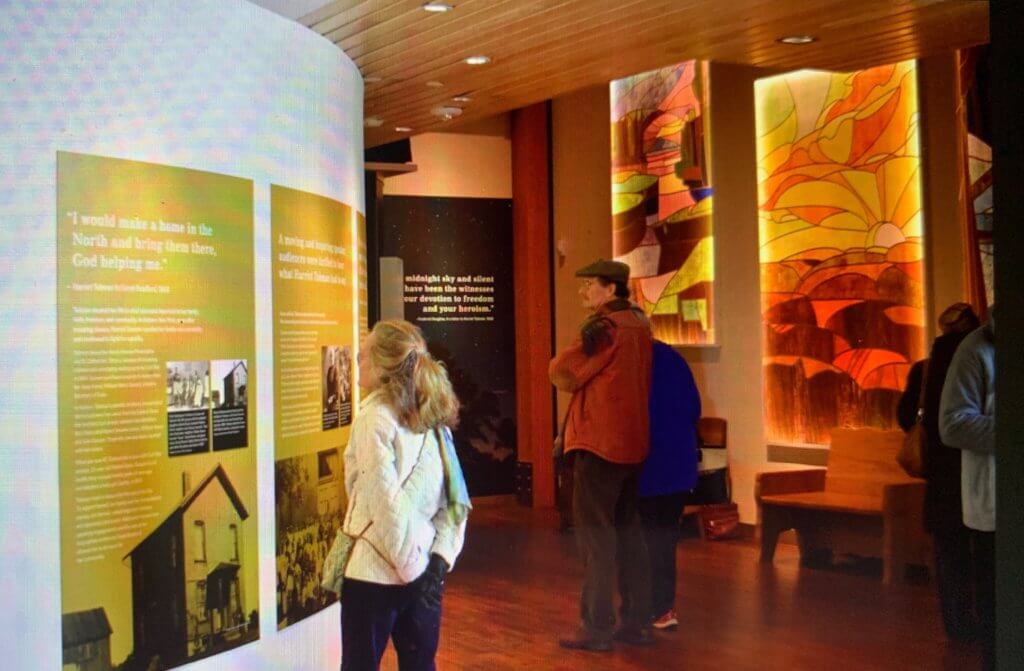
Below are 5 reasons to visit the Harriet Tubman Underground Railroad Visitor Center.
- Thoughtful Building Design
- Informative Engaging Exhibits
- Artistic Interpretation of Harriet’s Life
- Beautifully Landscaped Grounds
- Educational Museum Shop
But first, a little background.
Who was Harriet Tubman?

photo courtesy Wikipedia
The most famous conductor of the Underground Railroad, Araminta Ross (who later changed her name to Harriet Tubman when she married) was born into a brutal life of slavery in 1820. In her late twenties, she made the decision to escape North, and then returned repeatedly to help other slaves (including many family members) make the same journey to freedom.

“I never lost a passenger”
As a guide (or conductor), Harriet relied on a secret network of people and safe stopping points known as the Underground Railroad. The “trains” she led were groups of slaves traveling on foot through the woods and across water to reach freedom. As an escaped slave and abolitionist, Harriet’s life was continuously at risk; she was actively pursued by slaveholders, bounty hunters, and officers of the law.
Thoughtful Building Design of the Harriet Tubman Underground Railroad Visitor Center

To tell such a dark life story without overwhelming visitors is very difficult. To me, the national park service building was thoughtfully designed to offset that emotion. The exterior of the Harriet Tubman Underground Railroad Museum resembles two connected barns symbolizing where runaway slaves often hid. Inside, the building is filled with an abundance of natural and interior light which felt hopeful. To honor her story, both carpeting and warm wooden floors soften the sound of audio recordings and people talking. Everything is on one-floor making it easy for those with disabilities to get around.
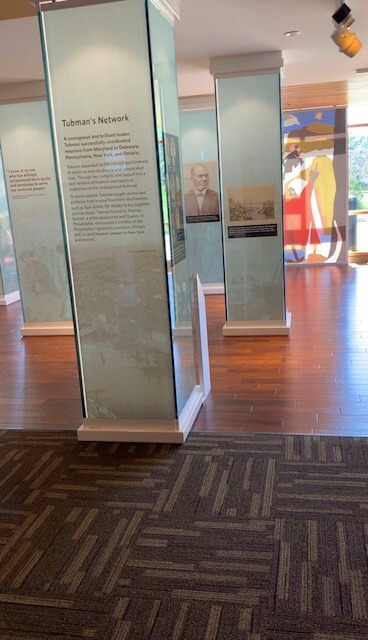
Informative Engaging Exhibits about Harriet Tubman
The multi-sensory exhibits are very engaging. You can hear, see and touch different items. When you enter the museum, you are first directed to a small auditorium to watch a short movie about Harriet Tubman. As you enter the next room, you see a beautiful bronze sculpture of Harriet Tubman on a wooden bench. Visitors can sit down beside her life-sized figure and rest awhile.
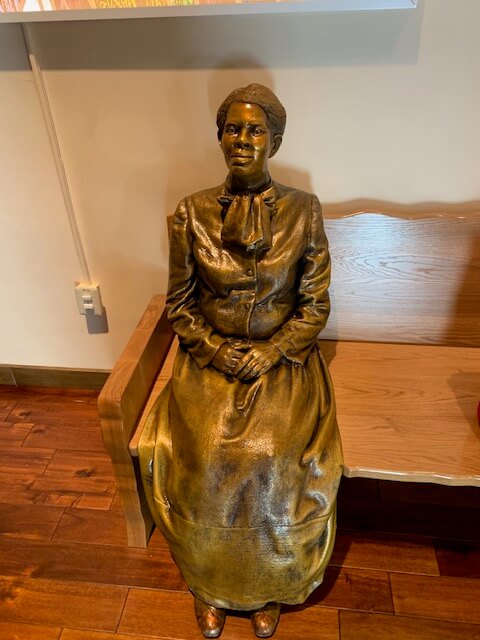
Like many museums, the story of Harriet’s life and travels are told through maps, pictures, video, and audio recordings. The history of her story spans several rooms, ending with modern interpretations of her life. The exhibits are well spaced out so you have room to process what you are seeing, hearing and feeling. I particularly enjoyed reading the quotes by Harriet which gave you a sense of her voice and strong faith.

“I had crossed the line. I was free…”
Interesting Facts About Harriet and Her Life
Here are some interesting facts I learned at the museum:
- Only five feet tall, Harriet never learned to read or write.
- As a child, her slave owner made her trap muskrats in the marshes of the nearby Blackwater River. This experience gave her the knowledge of navigating the marshlands which was critical later during her escape.
- Physically strong, she worked outdoors and learned survival skills from her father who was a timber foreman and carpenter.
- She first fled slavery with her two younger brothers in 1849. Fearing capture, they returned home forcing Harriet to come along.
- She never gave up her dream of freedom. Later that year, she fled again traveling alone 90 miles to Pennsylvania, the nearest free state.
- She worked as a domestic in Philadelphia and Cape May, NJ saving her money and building a network of contacts who would support her future rescues.
- Harriet first returned to Maryland in December 1850 to rescue her niece and young children before they could be sold at auction. They escaped and made it to freedom with the help of many others.
- She made 12 more trips to free at least 70 family members and friends.
- Over her lifetime, she successfully coordinated rescue missions for over 300 people from Maryland to Delaware, Pennsylvania, New York, and Ontario.
- During the Civil War, Harriet participated in battles and served the Union Army as a scout, spy, nurse, recruiting agent, cook, teacher and advisor to Union officers.
- After the Civil War, Harriet Tubman supported the women’s rights movement by touring New York, Boston and Washington giving speeches about her own journey to freedom and helping liberate others from the bondage of slavery.
- Throughout her life, Harriet believed her strong faith in God gave her the courage to be successful and lead others.
- Queen Victoria of Great Britain admired Harriet Tubman and gave her a shawl and medal to honor her activism.
- Harriet died of pneumonia on March 10, 1913, and is buried in Fort Hill Cemetary in Auburn, New York.

Artistic Interpretation of Harriet Tubman’s Life
Throughout the museum, there are a number of bronze figures and miniature metal statues representing scenes from Harriet Tubman’s life. In one room, a life-sized bronze statue of a slave woman is holding a baby next to a large, carved wooden cradle.
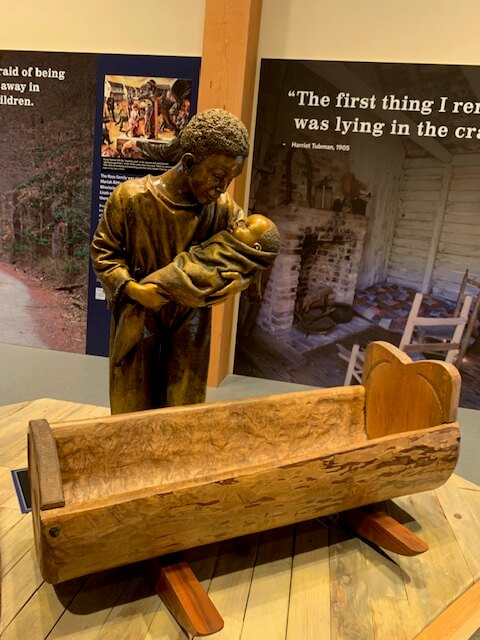
I especially liked the museum’s effort to make history more relatable to younger generations. When I visited, the museum included a tribute to her by students and faculty of the nearby University of Maryland Eastern Shore. They were inspired to create art based on Harriet Tubman’s life.
In the last room of the museum, there is a small, temporary art exhibit featuring their work. In addition to vivid paintings, there is a Manga-style multi-frame series of drawings that depicts several key moments in Harriet Tubman’s history.
Beautifully Landscaped Grounds
The story of Harriet Tubman’s life continues on the grounds outside the museum. Walking paths wind into the woods and outline much of the 17-acre property including a picnic area so visitors can enjoy the natural scenery as it looked in Harriet Tubman’s time.
Nearby, a Legacy Garden features native plants. On the other end of the property, a meandering lake accessible through the woods provides a glimpse of natural obstacles Harriet would have faced escaping to freedom.

Educational Museum Shop
As a history lover and parent, I really appreciate museum gift shops that offer ways to continue learning about the subject. When you enter the store, you notice an entire wall with books for children, academics and the general public about Harriet and the Underground Railroad.
In line for the cashier, the woman next to me was getting a commemorative stamp for her Signature Passport To Your National Parks®. Other gift items people were buying included mugs, postcards and clothing.
How to Get to the Harriet Tubman Underground Railroad Museum
Officially known as the Harriet Tubman Underground Railroad Visitor Center, the address is 4068 Golden Hill Road, Church Creek, MD. The museum is near the Chesapeake Bay. It is a 2-hour drive from Washington, DC and 1 1/2 hours from Maryland beaches.
From US 50, turn south on Route 16. Follow Route 16 to Church Creek about 7 miles; turn south on Route 335 / Golden Hill Road. Follow Route 335 about 4.5 miles, and the visitor center is on the right. Look for the three tall flags in the parking lot.
Harriet Tubman Underground Railroad Byway

For those who want to learn more about where Harriet Tubman was born, worked, worshipped, and fled, one of the tall pillars outside the museum showcases the 125-mile Harriet Tubman Underground Railroad Byway Driving Tour Map. The museum in Church Creek is stop #13 on the Byway. More information can be found on Twitter @Tubman_Byway.
Things to do nearby the Harriet Tubman Underground Railroad Visitor Center
On the road outside the Visitor Center, I noticed a sign with two important landmarks: Black Water National Wildlife Refuge and the town of Cambridge.

Black Water National Wildlife Refuge
Noticing that the Black Water Wildlife Refuge was only a mile away, I turned my car down that road. It was late afternoon and the area seemed virtually empty except for the tall pine forest to the left and the water on my right. My only companion that day was the white crane standing on the water’s edge.
The museum detailed the story of how 6-year old Harriet Tubman was forced to wade into the water of the Black Water National Wildlife Refuge to catch muskrats for her slave owner, Edward Brodess. Looking out into that water-filled marsh, it still looks like the landscape Harriet would have seen. Black Water is half-way between Peter’s Neck, where Harriet was born and Edward Brodess’ farm near Buckstown.
Harriet Tubman and Cambridge, Maryland
Next, I drove almost 10 miles to Cambridge. From the map, I knew that Cambridge is home to six of the 36 stops along the Harriet Tubman Underground Railroad Byway.
By the time I arrived, the Harriet Tubman Museum and Educational Center in the center of town was already closed. I saw signs pointing to an area behind the museum where a huge vivid mural had been painted. It’s easy to see why the mural has gone viral.
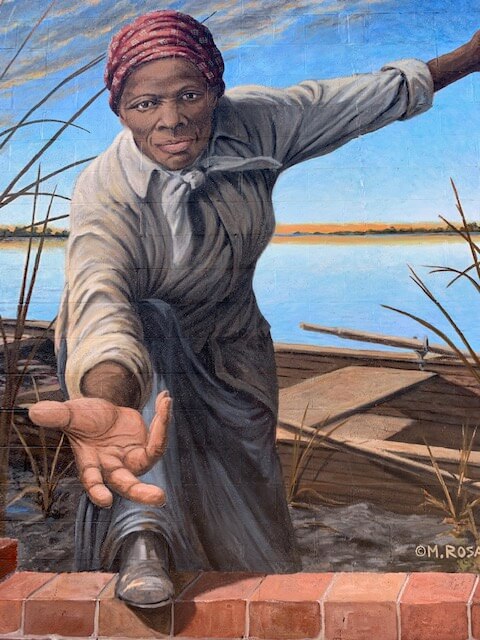
Standing next to the Harriet Tubman mural is a powerful experience. You can feel Harriet’s compassion and courage. A description said the artist wanted to capture the moment a slave made the decision to step forward and leave slavery behind.
Where to Eat near the Harriet Tubman Museum and Educational Center
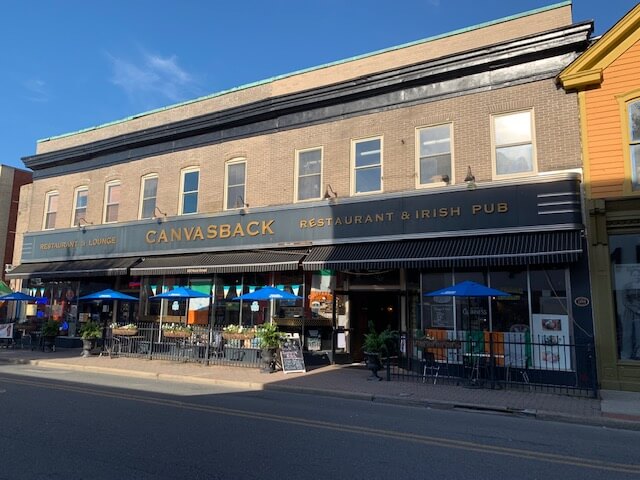
Right next door to the Harriet Tubman Museum in Cambridge was one of the oldest dining spots in town, Canvasback Restaurant & Coolahan’s Irish Pub. It looked bright and cheery from the outside and I needed dinner before I headed home.
A big sign outside Canvasback highlighted a Caramel Appletini. That was enough to lure me in. I like appletinis but they had me at Caramel.
Canvasback had a large menu with Irish fare, fresh local seafood and standard American cuisine. I chose a French Dip to go with my drink and both were delicious! Service was fast and friendly.

On the way home, there was a beautiful sunset. It was a nice ending to a very interesting day. This trip gave me a chance to look back and learn more about Harriet Tubman, a courageous and inspiring woman in history.
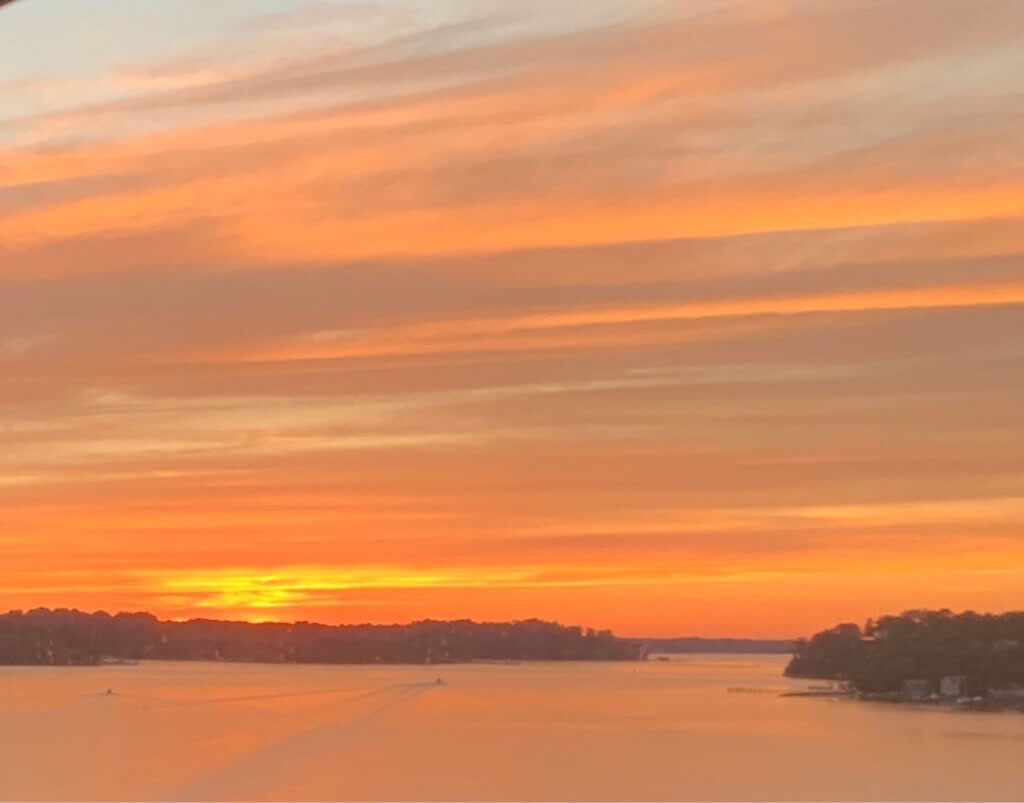
Harriet Tubman is the first of many memorable women that I will cover in this blog. In the comments below, please share your suggestions for other women you would like to see written about here.

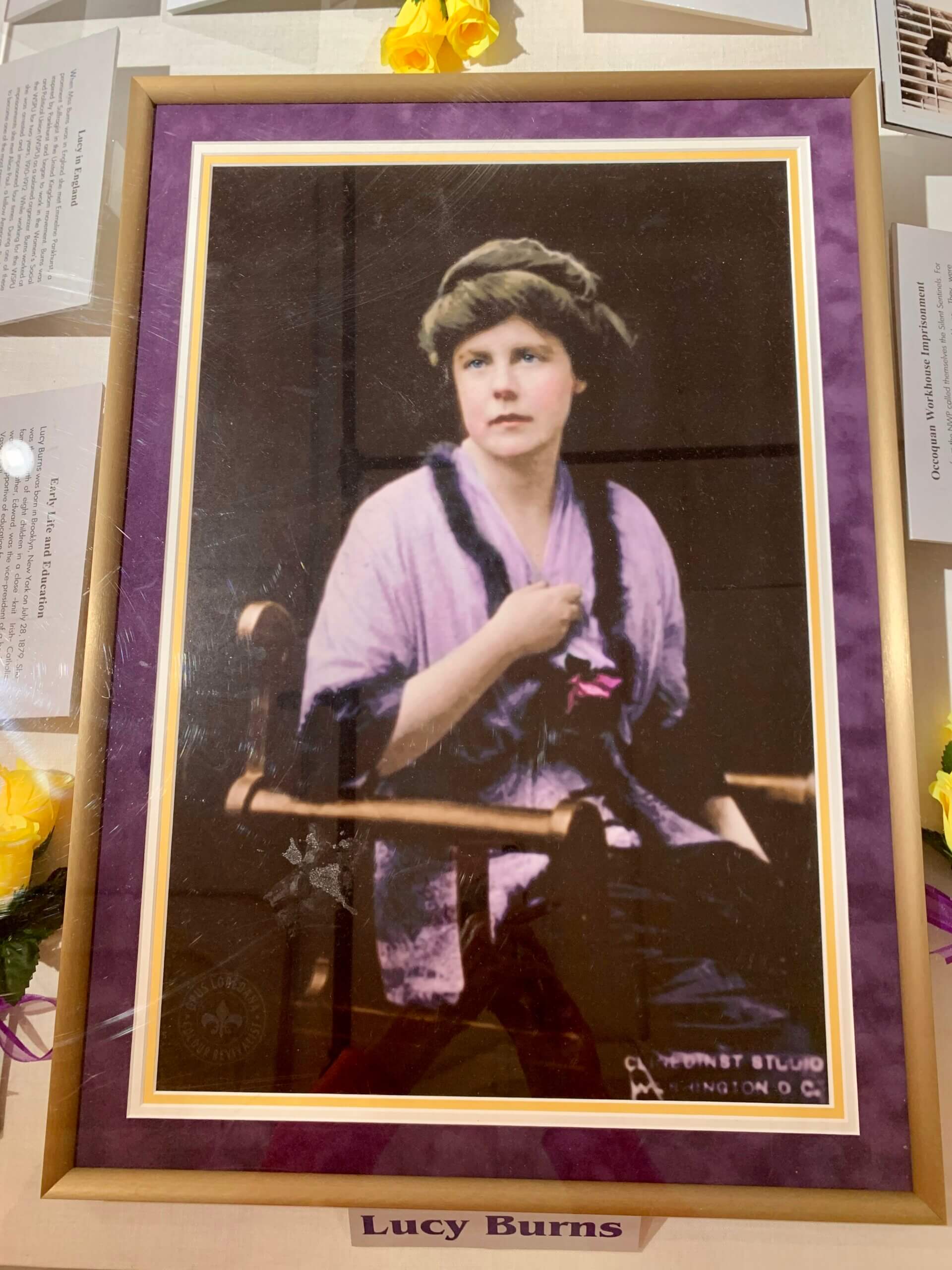
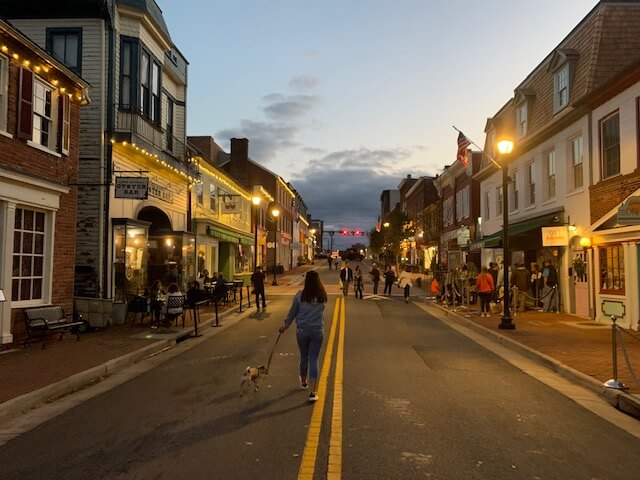
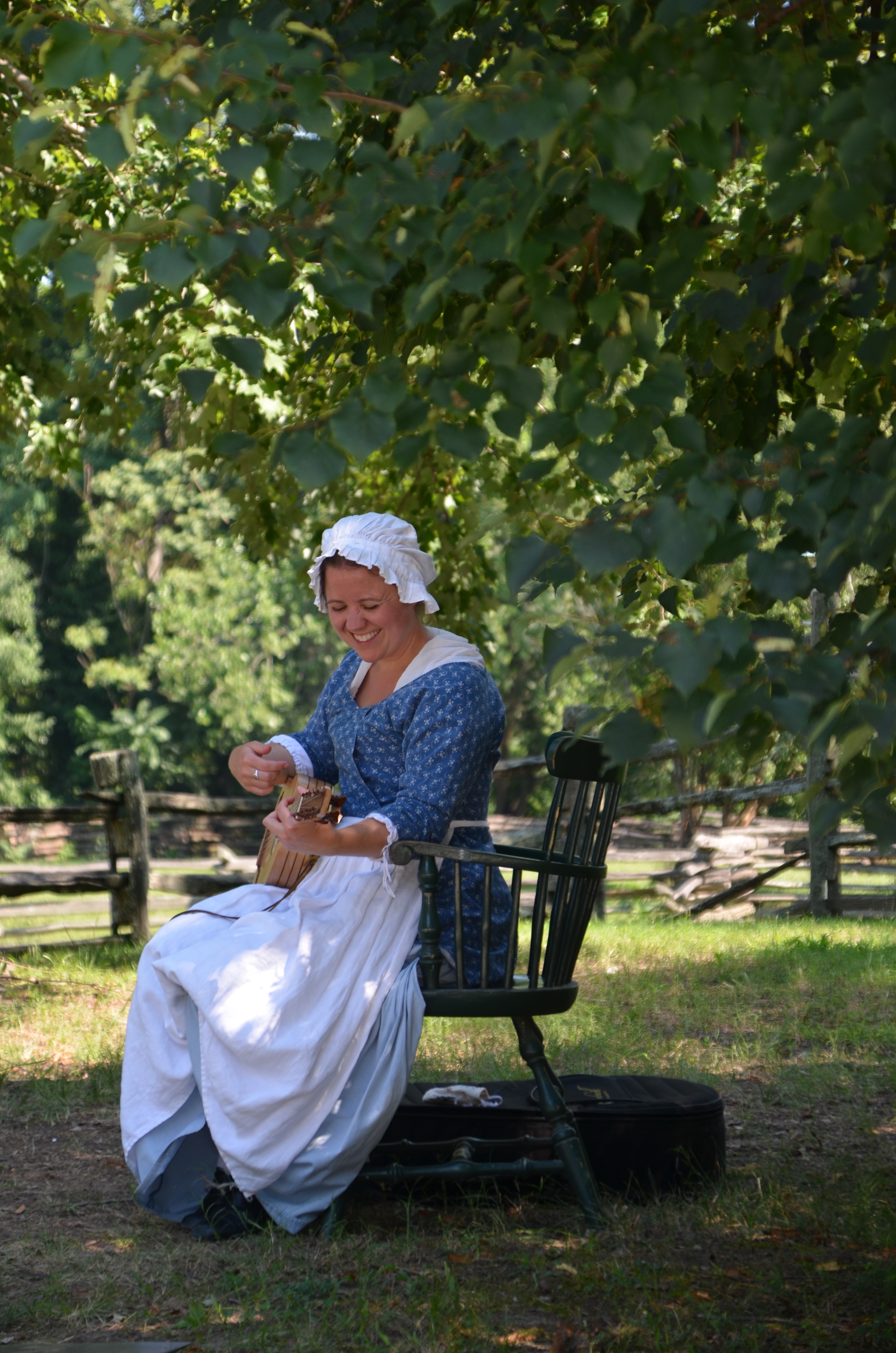


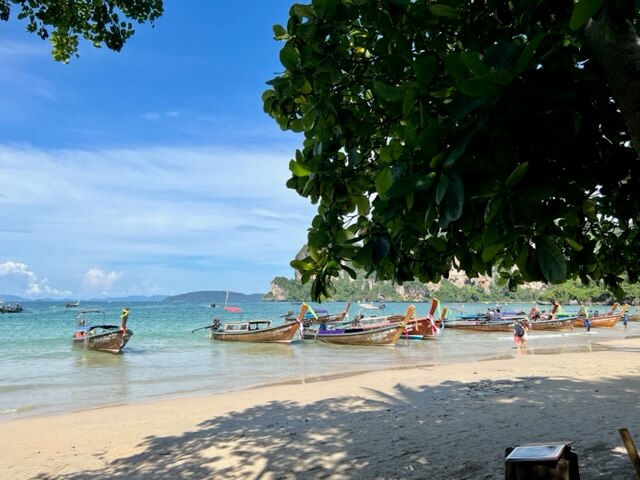
I had the beautiful opportunity of visiting this week, although the Center is currently “shut down” due to COVID19 , just to visit the place where she was born, ride the country-side was still pretty amazing!
Hi Kenny,
I’m so glad you got to visit the area where she was born and to see the natural beauty. I’m sorry the Center is “shut down” but hopefully you’ll be able to return again and tour it when it reopens. Thank you for sharing your experience.